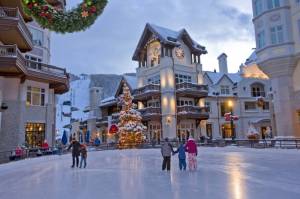Denver, CO – Snowfall was down this holiday season at most western mountain resorts but actual occupancy among resorts surveyed across Colorado, Utah, California and Oregon was up 1.3 percent compared to December 2010 when many western destinations were enjoying near-record snowfall and early season conditions. The most recent data released on Wednesday by the Mountain Travel Research Program (MTRiP) also revealed that the Average Daily Rate (ADR) was up a significant 8.1 percent compared to December 2010.
However, the report noted that strong early season booking momentum waned during the month, and although occupancy for the remainder of the season is still ahead of last year, the booking pace has dropped dramatically. Reservations taken in December for arrivals in December through May dropped 21.6 percent compared to the same time last year.

“We need look no further than the twin wild cards of snow and the economy to understand where we are in the seasonal performance to date,” observes Ralf Garrison, MTRiP director. “The last few years were driven by great snow and a sporadic economy and now these two crucial factors have flip-flopped, and snow has now become a strategic issue with results varying considerably between destinations. That said, visits from destination guests have held up remarkably well in most destinations compared to local skiers and riders who and are more influenced by natural snow conditions.”
The monthly Mountain Market Briefing monitors booking patterns for the upcoming six months. As of Dec. 31, on-the-books occupancy for the month of January in a year-over-year comparison is up 3.8 percent while ADR is up 3.4 percent. The six-month view for the January through June aggregate shows that on-the-books occupancy is up 6.7 percent compared to the same time period last year including double-digit growth in the late spring and early summer while the next few “ski months” are showing only single digit gains.
The Briefing tracks major economic indicators and provides an analysis that is mountain lodging-centric. Their assessment is that the recent positive economic news may be playing a role in the increases in mountain lodging but is tough to confirm. They reported that the Dow Jones Index closed up for the third consecutive month in November and is 5.5 percent higher than it was a year ago, that the Consumer Confidence Index rose for the second month with a 16.8 percent increase, and the Unemployment Rate dropped for the fourth consecutive month down to 8.5 percent—it’s lowest point since March 2009.
“Consumer spending and confidence have both increased substantially over the past 60 days, and holiday shopping set all time records although with attractive incentives from retailers,” explained Tom Foley, MTRiP’s operations director. “And yet, the direct impact of these gains on travel is hard to pinpoint, mainly because consumers have been loyal to the industry since early 2011 before the this positive news emerged. So, while continued positive growth in the mountain travel is hopeful, it’s not clear how much below-average snowfall may impact the balance of the season,” he cautioned.
While the number of destination guests has been impressive so far, many of them were families locked into their early season vacations because of fully prepaid lodging reservations. These visitors tend to be less ardent skiers that prioritize family time more than snow conditions and slope time,” explains Garrison. “Those two variables are no longer in play for the rest of the season so the twin wildcards of weather and the economy will significantly shape the remainder of the season.”

